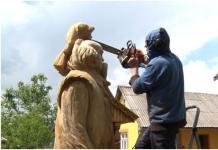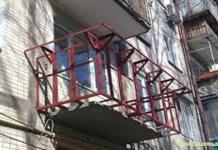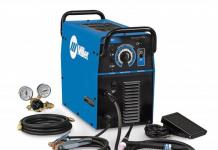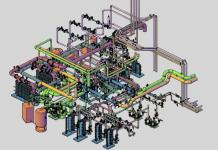The MK reporter made a unique journey on a train that transports convicts
“We are here with you like in a submarine: we closed - and we are on our way! - says the senior inspector for special assignments of the Federal Penitentiary Service of Russia. - The carriage for the transport of prisoners is completely isolated. There is even a diesel generator that allows you to live autonomously for some time. Unauthorized getting here or getting out of here is not-possible. There has not been a single case of escape in the last 20 years! I tell you: a submarine on rails!”
The Ministry of Internal Affairs and the Federal Penitentiary Service for the first time showed cars for transporting prisoners. The same “Stolypin” ones, in which half a million prisoners are sent to the stage every year. How do the passengers on the prison flight feel? How do they pass the days and nights under the sound of wheels? And why does travel become an unbearable ordeal for some?
The MK observer became the only journalist who was allowed to ride in such a wagon "without trial or investigation."

"Stolypin carriages": modern, released in 2016, and the one that transported prisoners in the middle of the last century. There is a difference.
Wagons for transporting prisoners have been infamous for a long time. And how much Solzhenitsyn wrote about them in his Gulag Archipelago! But has nothing really changed since then? The only way to find out is to experience it for yourself.
If you have never traveled in the "Stolypin carriage", you have not seen life in all its fullness. And if you ride - you are no longer afraid of anything. So say prisoners who have passed through prisons and camps and traveled thousands of miles on the railways that connected them. And they assure: yogurts, computers and livestock are transported much more carefully than living people.

Employees of the escort service invite you to ride in the wagon.
I traveled in the 90s from Moscow to Chita for two weeks, and it was a real hell, - says former prisoner Nikolai Smirnov. - Plus 40 degrees, stuffiness, a wild stench from dirty, sweaty bodies. Two days later, some kind of infection spread among the prisoners, many began to have a fever. I myself lost consciousness and, frankly, I was glad to turn off at least for a while and not see all this nightmare.
An editorial request (where we asked to show trains for prisoners) received a positive response. As emphasized in the Federal Penitentiary Service and the Ministry of Internal Affairs: for the first time a person without shoulder straps and without a sentence is allowed inside.

Yaroslavsky railway station in Moscow. Wagons for prisoners are always on separate tracks, so that free passengers do not see them. On the way to the closed area of the station, we enter into a philosophical dispute with the employees of the penitentiary system about the origin of the cars themselves and their names. I insist on the well-known version that the carriages appeared at the beginning of the last century during the mass migration of people to Siberia, initiated by the tsarist Prime Minister Stolypin. They object: the railcar was developed by the staff of a railcar plant in the 1950s (and since then, supposedly, they have not changed much conceptually), and the Stolypin reform has nothing to do with it. Be that as it may, photos of NKVD carriages with bars on the windows, dated to the 20-30s of the 20th century, have been preserved in the archives. However, it is possible that in those days there were no cameras inside there yet ...
Now two departments are involved in the transportation of prisoners at once - the Ministry of Internal Affairs and the Federal Penitentiary Service.
We are responsible for the carriages themselves, for their technical condition, equipment, security during parking, - Aleksey Polyashov, head of the special transportation center of the Moscow Internal Affairs Directorate for railway transport, immediately clarifies. - And the employees of the Federal Penitentiary Service - for loading and unloading prisoners and for everything that happens to them during the journey.
That is, if a prisoner says that he was beaten during the "journey", it was not the police, but the jailers who did it. Only if it didn't happen on the way to the car.

The MK observer felt like a prisoner-traveler.
At the end of last year, the Government of the Russian Federation took care of the transportation of prisoners. And in fact, by order of the White House, cars of a completely new modification were produced - they are larger in size, they can be transported by ferry (a special design of wheels and fasteners is provided for this), they can reach speeds of up to 160 km / h, are viewed from all sides by cameras fixed outside, etc.
But the most interesting thing is the filling. Miracles are generally told about her: they say, complete comfort and sterility, like in a hospital. 26 new cars worth 40 million rubles each were put on the rails and put on first runs at the end of February 2016.

This is what the hallway looks like.
I wonder if they'll let me into one of those miracle cars? Or in an old one, shabby for decades, inside of which there is no living place without the inscriptions “AUE” (“prisoner lot is one”), “Vasya was here” and all in the same spirit? By the way, today there are 207 of these on the balance sheet of the Ministry of Internal Affairs, and among them there are real rarities. One, for example, was rumored to have been redesigned specifically for Mikhail Khodorkovsky: the disgraced oligarch rode alone in it for security purposes. A unique case, by the way. 6 days under the sound of wheels in complete solitude (escorts do not count).
But here we are. And yet ... this is a new, barely run-in car! If you look closely: on one side there are windows with bars, and on the other there are no windows at all. The attendants press the code, and only after the signal is confirmed, the doors open. You need to jump directly onto the high steps (I wonder how the elderly and the disabled are dragged inside?).
The car inside is divided into two parts, one of which has a compartment for conductors and employees. There is also a room where the entire system of the wagon's vital functions is located: pictures from CCTV cameras are displayed on several screens (and there are more than a dozen of them throughout the wagon). On the “half” of the employees it is quite comfortable, and their compartment is more like a SV or a suite. There is even a kitchenette with a stove!
"Half" for prisoners is much more modest. A long corridor, on one side of which are compartment cameras.
The new modification is 80 cm larger than the previous version, the escorts say. - Because there are 9, not 8 cameras. In total, we can transport about 80 people.
A few years ago, the Supreme Court of the Russian Federation recognized the norm providing for the transportation of up to 16 people in one cell of a wagon car as illegal. People in robes considered that 0.6–0.8 sq. m per passenger is not just small, but humiliating and generally violates human rights. After that, in fact, modernization began.
Well - according to the coupe, that is, according to the cameras! I get the so-called small. Iron shelves that do not recline, there is not only a window, but also a table and other attributes familiar to passengers.
Sitting on a shelf is more or less comfortable, but lying down is not very comfortable.
The shelves are made of non-combustible material. Law enforcement officers abandoned the idea of wooden ones or some other ones, because it was very dangerous. The convicts often smoked, there were fires...
By the way, about smoking.
Not so long ago, Roman Petrov, a resident of Sochi, accused of stealing a mobile phone, described in MK in his "travel notes" how he, an asthmatic, was placed in a smoky "Stolypin carriage". An ambulance arrived at the nearest stations, they pulled him out of the car, pumped him out, shoved an inhaler into his mouth and brought him back. For all the time, they took me to the toilet once and gave boiling water once ...
But in this car, signs “no smoking” are everywhere, and pipes with boiling water are connected to each cell (but only the escort can pour water from them). And there is even a water disinfection system.
Representatives of the Ministry of Internal Affairs lock the cell door with a key. Ask:
Is it scary? Is it like in a crypt here? It's not as bad as the prisoners describe to you. Provides bright artificial lighting. Yes, and daylight breaks through the windows on the opposite side through the lattice doors.
Still, riding in a windowless compartment is dreary and gloomy. I want to get out of here as soon as possible. But we are sitting in a compartment with guards. It's time to ask them the big questions. I take out the rating of complaints of prisoners, compiled by human rights activists.
Number one - terrible tightness. They told how the prisoners slept on the same shelf in threes and even fours.
Number two - the prisoners are often mixed up. Next to the killers and maniacs, those who are convicted of road accidents or petty fraud are shaking.
The staff are patient. They assure that now there is a strict instruction - do not take more than the limit “on board”. If the head of the guard violates this requirement, then he is brought to disciplinary responsibility.
Convicts sometimes mistakenly believe that each of them should have a bed, they continue. - Look, there are three shelves in the cell. The upper places are sleeping places, prisoners who travel long distances are placed there. And the lower ones are seated. Here go those whose journey takes from 2 to 6 hours. Women ride in the same carriage, but in a separate cell. They are about 10 percent of the total number of passengers.
If you were a convict, you would go with a personal file sealed in an envelope, - says the "car driver". - We have no right to open it, but a certificate is glued to the envelope, where there is a photo, signs, destination, article and term. And it is also indicated there, for example, that it requires isolation from all categories of convicts or does not require it. So the maniac won't ride with the thief
Complaint number three (a particular pain for all passengers of the "Stolypin cars") - the toilet. The editorial office received dozens of letters from former and current prisoners, who say that they always took empty bottles with them on the road to relieve them right on the spot. Even in this comfortable car there is only one toilet, and it is not particularly necessary to count on the fact that each of the 80 prisoners will be taken out at least three times during the day. It will be at least 240 times. But the employees of the Federal Penitentiary Service are arguing with me.
The escorts are mainly engaged in this, - they retort. What else can they do on the road? Just take it to the toilet and pour boiling water. The corridor is narrow, it is uncomfortable to stand, so they have to move all the time. But even if we assume that you are right, in the new cars all the actions of the escorts are recorded on video. And if someone refused the prisoner's first request, he will be punished.
God bless! But, I repeat, there are only 26 new cars so far... They say that the Federal Penitentiary Service receives about 80 complaints a year about the behavior of a convoy during a trip in a wagon. Every fourth in 2015 touched the toilet.
And I continue to explore the wagon. The coolest "trick" of the entire modernized car is a special panel with ultraviolet lamps, which allows you to kill tuberculosis bacteria and other dangerous infections. There has never been anything like this before, and often the prisoners declared that they fell ill after two or three days of travel along with the sick. By the way, the medic does not accompany the prisoners. In the car there is only a single first-aid kit for them and for employees. If someone becomes ill, the car is uncoupled and an ambulance is called to the nearest station. Until now, no one has ever voiced how many convicts died on the way. They say that in the early 2000s it was several hundred people.
And now there are only 3-5, - they assure the Federal Penitentiary Service. - It's not as bad as you might think.
The number is surprising.
I'm trying to imagine how I'm riding in this carriage for a month or even more. After all, this is how long it sometimes takes to get from Moscow to some distant colony. Not so long ago, one of the well-known businessmen imprisoned appealed to human rights activists with a request to allow him to buy a ticket from Moscow to Vladivostok (there will be a trial), because he was afraid that the train would simply not reach him because of his illnesses.
About a few months - this is exaggerated, - explains the representative of the Federal Penitentiary Service. - But there is a problem. There is, for example, the Moscow-Vladivostok train. But he's fast. And we do not have the right to hook up our cars to ambulances and branded ones (because they do not stop everywhere and there is no time and opportunity to load and unload convicts at intermediate stations). Because we are going through other cities. Transit points where convicts wait for another train for 2-3 days are determined by law. As a result, we go from Moscow to Vladivostok through Chelyabinsk, Irkutsk and Khabarovsk. This may take three weeks.
You can still endure three weeks in a car with air conditioning and ventilation. But what about the rest?
Is it possible, for comparison, to ride in an old carriage? I ask the staff.
Alas, they are all on the routes, do not catch up with them ...
21 old "Stolypin" cars will be decommissioned in the coming days. Maybe some of them will even be assigned to a museum. According to rumors, both crime bosses and respectable businessmen want to buy these rarities. Both those and others hope with their help to preserve the image of a transit prisoner ... In memory of those times when the transportation itself was a torture that many could not stand.
For the first time wagons appeared in 1908 during the time of the well-known minister of tsarist Russia Stolypin. These were ordinary freight cars adapted for the transportation of immigrants from European Russia to Siberia, which, after the initiator of the mass resettlement, Stolypin, began to be called "Stolypin". From the ends of such a car there were auxiliary compartments, where agricultural equipment was placed and livestock was transported. When the resettlement company began to decline, the "Stolypin wagons" began to be used to transport convicts.
So they are still called in the prison environment, although now it is just a modification of a standard passenger car. In appearance, it is almost indistinguishable from that - only on one side there are smaller windows - there are none in the compartment for prisoners, but on the windows of the other side, which is from the side of the aisle, there are bars on the windows. Such a wagon is divided into two halves - for convicts and for the convoy.
You can see the difference and, the next time you are at the station, wave your pen to the traveling convicts and remember the old adage about the bag and the prison. Although usually the windows at the stations are closed even in the heat and, accordingly, it will not work to see what is inside, since they are opaque.
The more official name of such a wagon is a wagon-zak, as well as a car for transporting arrested people -. Most likely, "zak" is an abbreviation for something like "closed type", but the prisoners pronounce it in their own way - like "avtozek" and "vagonzek". Very aptly, as, however, it usually happens on a hair dryer.
So - about the internal structure of "". Imagine an ordinary compartment car, a standard compartment, but with only three shelves, the finish of which is clearly simpler and the benches are wooden, which has no window, and the wall with the door is a lattice with a small cell. Of the modifications, there is also a foldable second shelf, which allows turning the second tier into a continuous bed. The second shelf is the most comfortable, so travelers with experience tend to occupy it first of all - here you can lie and sit, while below, with a crowded compartment, you can only sit. And it's hard to sit all day. On the third shelves fits only one person lying down. People come here to sleep purely in order to exchange living space.
It is difficult to guess the route of the train. Prisoners are guided by the station speakers, which announce the boarding of a particular train. Let's say, "The Moscow-Pavlodar train departs from the second (first, tenth) track", and the train started moving a few minutes later - there is a possibility that the convicts are really going to Kazakhstan. According to the station mouthpieces, an experienced convict will determine the station (Kazansky, Yaroslavsky, Kursky, etc.), and hence the direction of the train - east, northeast, or others.
The Stolypins do not always follow the shortest path, but in a way that is economically advantageous, which does not always coincide. Up to the point where  for example, in order to get from prison to a zone located 140 km away, one has to make a detour of 700 kilometers, resting in two prisons of neighboring regional centers, spending two weeks on this due to the fact that there is no money for gasoline for the auto prisoner.
for example, in order to get from prison to a zone located 140 km away, one has to make a detour of 700 kilometers, resting in two prisons of neighboring regional centers, spending two weeks on this due to the fact that there is no money for gasoline for the auto prisoner.
Landing in the wagon takes place at the same brisk pace as in a special car. A paddy wagon drives up to the carriage doors - door to door, the doors open, a guard line up in a meter gap and the procedure begins.
The stream of prisoners pours in portions into the corridor of the car, where boarding takes place in the fourth compartment, then in the third, and so on until the first. The second end of the corridor is blocked not only by a closed door, but also by an escort. Loading of convicts takes place on a remote platform, away from prying eyes. Outwardly, such cars resemble luggage or postal ones.
It is much harder to escape from the "Stolypin" car than from a paddy wagon or penitentiary real estate - a prison or a colony. The escape attempt is influenced by many factors that are typical only for the wagon. Firstly, all the compartments are visible from the corridor, and the guard watches the convict without even opening the door. Secondly, jumping at speed is very risky, and getting off or sliding down while stationary is stupid. At each stop, two soldiers get out of the car and carefully examine the walls and bottom of the car (at least they are obliged to do this). And further. On the road, no matter how long it may be, the prisoner leaves the compartment only for the mandrel. But even these few minutes, while he is pouting in the toilet, he is guarded by three people. Alexander Solzhenitsyn compared the mandrel in a wagon wagon with a responsible and even combat operation for the guard.
16. Traveling in a Stolypin carriage.
I ended up in a two-local department, where we were placed 6 people.
Of course, it was not so easy for six people to accommodate in a two-seater compartment, and even with some of their own luggage. (hereinafter - spelling and punctuation of the author) and for long trips.
But still, we settled down, two people on each shelf, lying in a butt or a jack. With such a distribution of the area, we still had a free area, a kind of lower bench and on the floor., There was a slop bucket on the floor.
In this position we rode
to the city of Kirov.
On July 22, our train left Sokolniki station, at 10-11 o'clock we were taken to Perov station, near Moscow. Here the train stopped, we initially did not understand what was happening!
Our convoy left the wagons and we were locked up, without any guards.
It is a dark July night outside, gun and weapon shots are heard, we look out the window and see shells exploding at the top.
It turns out that at that time there was the first Nazi raid on Moscow and our anti-aircraft guns fired at them.
Fascist planes were driven away. Canvas came into the car and the train moved on.
Our next stop was St. Kirov.
At st. Kirov, our train arrived in the middle of the day; to our wagons (pages 123 and 124 are clean.) approach the people and consider who and where they are being taken?
And then one woman of about 40 stood out from the crowd and began to shout loudly at us: Here they are bringing the Nazis! They must be destroyed!
In this spirit, she shouted for quite a long time, probably wishing to attract the people standing here with her cry, but to our happiness, she did not find followers for her call.
During the scream, policemen stood on the platform and heard the pogrom calls uttered by the woman, but none of them forbade her to utter these pogrom calls.
In Kirov, 3 urkachs were put in a two-seater compartment with us, now there are 9 of us, if it was difficult for six people to accommodate here, then
it would seem impossible for nine people, but we still had three free places: these are two on the floor and one place under the lower bench, and they were accommodated there ... the Russian proverb “In cramped conditions, but not offended” was involuntarily recalled ...
The weather was hot, in the compartment from a large number of people there was an unbearable stifling stuffiness, and even here there was a "bucket" around the clock, where they went for big and small. They were allowed to go to the toilet only twice a day: in the morning and in the evening.
So imagine what we had in a compartment for air?
In this position we rode for 15 days, and breathing this air; I couldn't sleep, I couldn't sit or stand.
We ate dry food, yes whether bread, fish (cod). Water was provided in rather limited quantities.
Recently, State Duma deputies have produced so many punitive laws and draconian amendments to the Criminal Code that it is time to start an educational program of citizens regarding prison and camp life under the single heading "Now everyone should know this." And as we have recently seen, parliamentary immunity itself is also not eternal. And there, you see, a pre-trial detention center and a court, a stage and a zone. Now it's easy for us.And as the first lesson on the topic “Now everyone should know this,” we will talk about the so-called milestone Stolypin cars. Of course, only for general educational and cognitive purposes, and nothing else.
So, the "Stolypin wagon" is a standard wagon for transporting special contingents or, to put it more simply, convicts. First of all, it is used to deliver convicts in stages from the pre-trial detention center to correctional colonies.
The “stolypin” itself is almost an ordinary compartment car, only instead of doors there are bars, and there are windows only from the side of the corridor where the escort walks. The other wall is blank. There are three sleeping tiers, and a partition is lowered between the “shkonks” of the second level, leaving a small “hatch” and thereby creating another sleeping place. As a result, according to official estimates, there are seven berths in the Stolypin compartment, but this number is observed only on paper. I happened to “travel” in a kupeshka stuffed with 12 convicts, and even each had a trunk with things and products. After all, a lot of time went to wind. How did you fit in? Just. Two people sleep on the topmost shelves, plus three people on the second tier, and below seven people sit on two shelves. Then they change - sleep in turn. Of course, no mattresses - bare shelves.
By the way, if a paddy wagon arriving from a pre-trial detention center cannot drive right up to the car, then the convoy takes it “in the field” and leads on foot to the platform. The acceptance process is simple. The head of the convoy warns: “I am the head of the convoy. I bring to the attention of the rules. When you shout out your last name, answer "I", on command you jump out with things and immediately squat down. Things in front of you, hands on the back of your head. Look only down! Give your name, patronymic, year of birth, article. When moving, look only at your feet! In the event of an attempt to escape, the convoy fires without warning! And they went in light dashes to the "Stolypin", the shepherd dogs from both sides were straining from barking, the machine gunners hurried "Faster. Faster". At the carriage, everyone squats down again, the trunk in front of them, hands behind their heads, eyes down. And the acceptance begins. One by one we take off to "Stolypin" to the cries of "the first went" - "the first received", "the second went" - "the second received" and so on.
First, the entire stage is stuffed into the first two compartments. And when the "Stolypin" is hitched to the passenger train and the train starts moving, the search and seating begins. One by one, they are transferred to a neighboring compartment, where all things are laid out on a bunk and carefully examined by the guards, and after that the convict is transferred to a compartment in accordance with the “sentence serving regime”. That is, a special regime (“minke whales”) travel separately from a strict one (“strictors”), and the general regime is also separated from those sentenced to a colony-settlement (“settlers”). Women, of course, travel in their own separate compartment, as do tuberculosis patients (“tubes”).
Rare video. Amateur shooting of an empty "Stolypin"
On the way they do not feed, they give only boiling water. Usually, in a pre-trial detention center, before the stage, they give out dry rations for several days - biscuits, instant cereals and soups. But food and drink during the entire journey should be reduced to a minimum, since they are taken out to the toilet extremely rarely and reluctantly.
Now for the time. "Stolypin" is rehooked all the way from train to train, kept in "sumps" for many hours. And indeed, do not show the car with bars to respectable citizens going on vacation or on business trips. Therefore, the usual in our understanding, the time of movement of the train from one city and another has nothing to do with escorting in "Stolypin". So from Moscow to St. Petersburg, our wagon went for two days, and from St. Petersburg to Murmansk we crawled for more than three days.
And one more peculiar addition to the punishment is the uncertainty throughout the whole stage. Most convicts do not know where they are being taken until they arrive at the colony. Almost nothing can be seen from the windows opposite, and the escorts are silent, like partisans. So you have to listen to distant radio announcements, trying to understand the names of cities and then calculate the approximate direction. Sometimes it happens that on the second day of the journey, the escort, at the next request, “Chief, at least tell me the direction,” taking pity, quietly throws “Go to Murmansk.”
The process of boarding the "Stolypin carriage". Recorded by a hidden camera from a very long distance.
Previously, the stage in the "Stolypin" was also accompanied by beatings of convicts, throwing things around during the search, hitting butts during boarding and disembarking. The so-called "Vologda convoy" was especially fierce, about which there were legends in all prisons and zones. But now, when there are video cameras in every "Stolypin", the convoy is calm enough, as far as it is possible in a "prison on wheels". I happened to travel from Murmansk to Vologda, accompanied by a "Vologda convoy" - silent, gloomy and healthy men. They look with gloomy glances, mint words, but do not beat. Up to a certain point, of course.
PS. The girls from “Pussy Riot” Tolokonnikova and Alyokhina were taken to the Mordovian and Penza colonies by the so-called special stage, that is, the same “Stolypin”, but without “sumps” and transfers (intermediate prisons, where convicts are kept for several days in anticipation of further staging). So to speak, without transits and delays. Directly.
Such VIP stages exist for well-known characters, but "Stolypin" is always present. Nothing without him.
Stolypin took a number of measures that encouraged the resettlement of peasants from the European part of the country to the uninhabited regions of Siberia and the Far East. The mass resettlement, conceived by the government, was part of the agrarian reform carried out by Stolypin. About three million peasants left their homes and went east to get land for use.
In 1908, the most ordinary freight cars were adapted for the transportation of numerous migrants en route to Siberia and the Far East. Since the initiator of the mass resettlement was P.A. Stolypin, these improved cars began to be called "Stolypin". Mass production of cars of the "Stolypin" type fell on 1910.
This, of course, did not provide the opportunity for a comfortable journey, but it could accommodate immigrants with their simple property. In the back of the freight cars, special compartments were equipped where livestock and equipment could be transported. There were few amenities, but the peasants, who were accustomed to living in harsh conditions, did not consider moving in the “Stolypin carriage” something terrible. Moreover, the passage to the new place of residence was free.
When the wave of migrants began to fade away, the "Stolypin wagons" began to be widely used to transport prisoners - those on remand and prisoners.
Further history of the "Stolypin carriage"
After the establishment of the power of the Soviets, the name "Stolypin carriage" became a household name. Repressed persons were transported en masse in wagons of a similar design. The features of such wagons and all the “charms” of transporting prisoners in paints were described by Alexander Solzhenitsyn in one of his novels The Gulag Archipelago.
The "Stolypin wagon" in its later version resembled an ordinary wagon in size. Only inside it was divided into compartments-chambers by special partitions, one part of which was closed with bars.
The cells were located on one side of the car, the other part was occupied by a corridor where a convoy walked from time to time, watching the behavior of the prisoners.
Modern "carriages" - cars for transporting prisoners - outwardly almost do not differ from mail or baggage cars. The only difference is that the internal structure of the premises is adapted for specific purposes. The device of a vehicle intended for the transport of prisoners provides a minimum


























